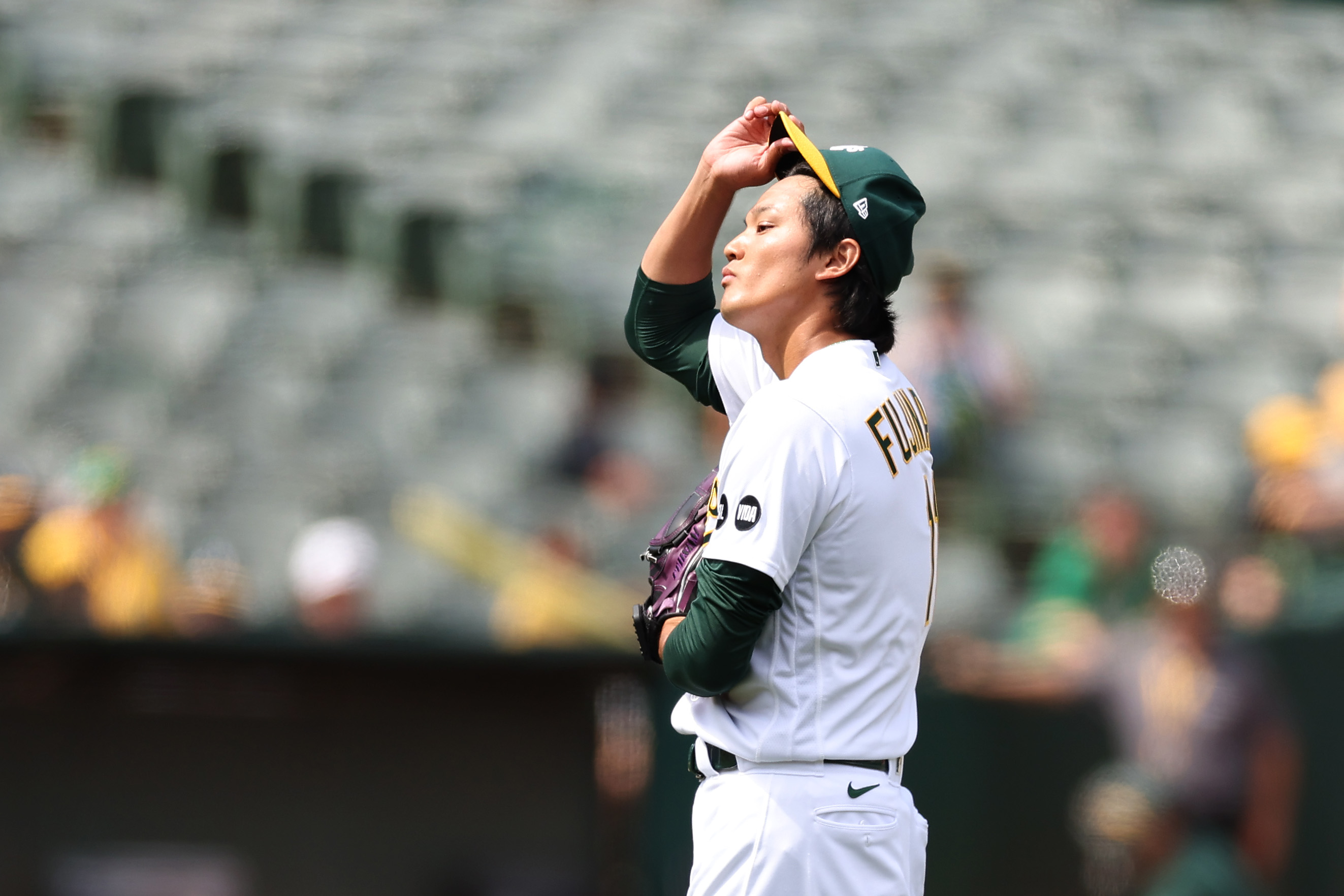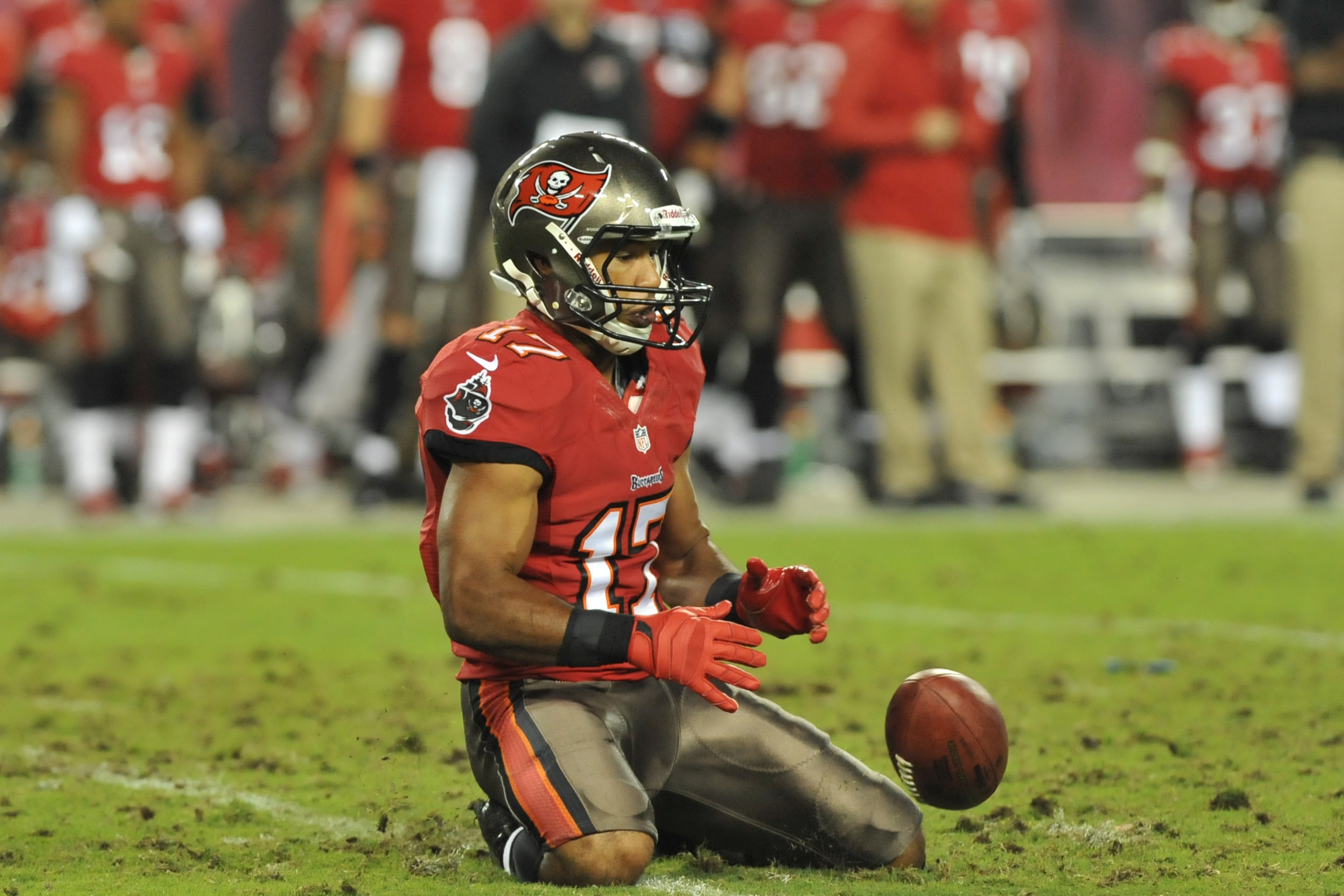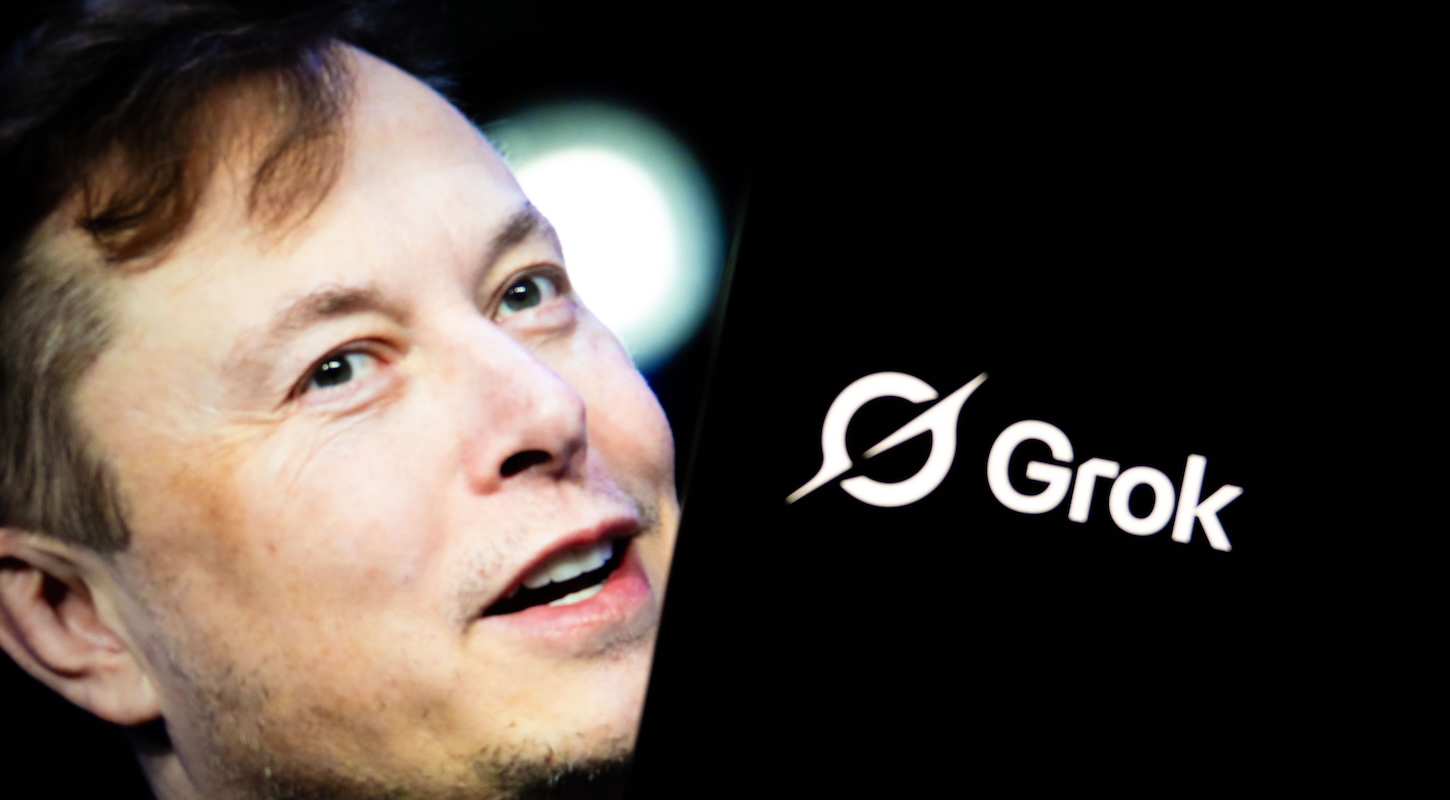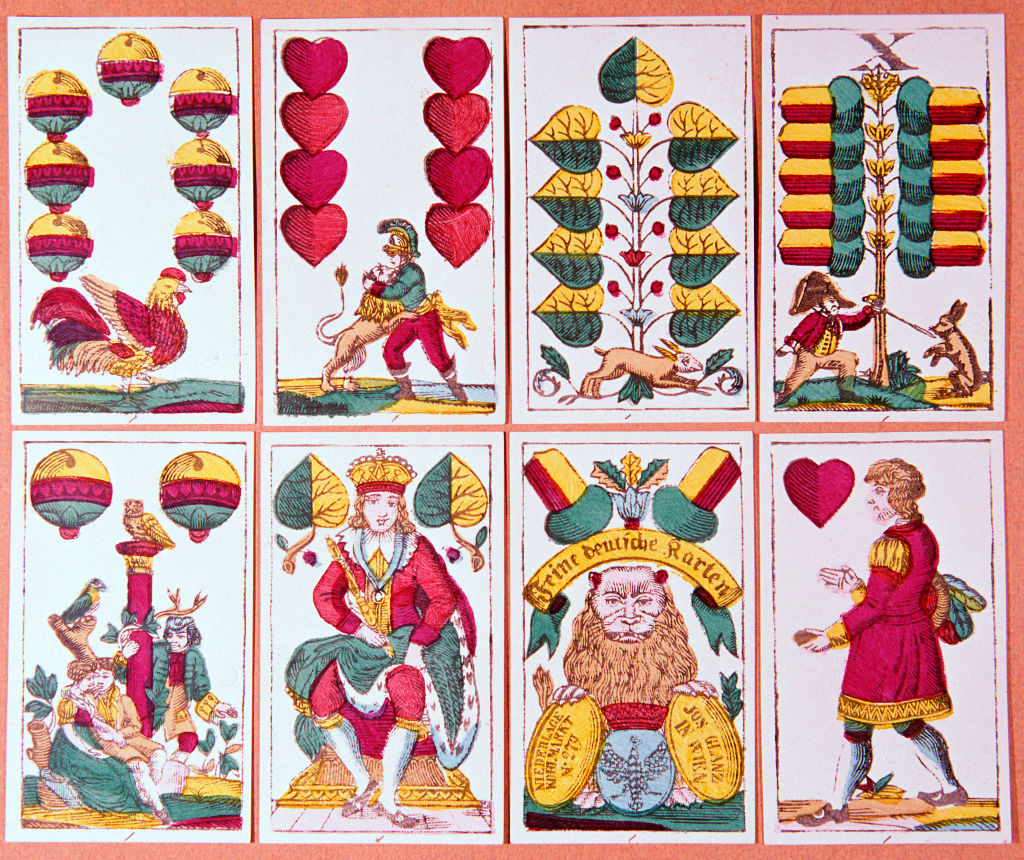It's a mostly true baseball truism that a pitcher has to be pretty good to lose 20 games in a season. They also have to be pretty unlucky, and they can't be too effective, and it helps a lot if they pitch for a losing team, but even a bad team will have options, even if those options amount to "someone who is not this guy that keeps losing." There's a type of big league ace that spends some early and retrospectively significant-seeming portion of their career getting torched, but a 20-game loser doesn't need all that—it's remarkable enough just to have a proper big league career after proving to be pretty-good enough to lose 21 games, as Mike Maroth did on a near-historically bad Detroit team, or 17 in consecutive seasons, as Mike Morgan did on some more prosaically bad Oakland ones.
This year's Oakland A's present what is either an intriguing or just depressing edge case for this argument. It is true, in the way that it's true for every big leaguer, that Shintaro Fujinami had to be pretty good for the A's to permit him to allow 47 earned runs in 49 and one-third innings over the first half of this season. But it is also true that Fujinami, a 29-year-old ex-prodigy that the A's signed out of NPB for $3.5 million, also just had to be good enough to stay on an abject A's team that has spent this season acting out the punchline to the long, cruel civic prank that the team's vile ownership has played on the city and its fans. That is, at some level, Fujinami mostly just needed to be better than the shockingly large number of pitchers running seven-point-whatever ERA's for the A's Triple-A team, which admittedly has the misfortune of playing in the launchpad environs of Las Vegas and also has the misfortune of being stocked with guys who were unable to win a job with this year's A's. Winning and losing games is a matter of context and luck, at some point; Fujinami had an 8.57 ERA when the A's traded him to the Orioles this week, and if that number isn't the whole story, it tells a story all the same.
If Fujinami was not exactly good with the A's, he also wasn't quite as bad as that extremely unsightly number makes him look. His numbers were warped by a few disastrous starts in April—disastrous as in "he allowed 24 earned runs in his first 15 big league innings"—and have trended notably towards the actively positive side of things since the club moved him to the bullpen in June. In his last 20 appearances, Fujinami's ERA is 3.32. That trend, in conjunction with his outrageous stuff, made Fujinami good enough to bring back one of Baltimore's many live-armed pitching prospects. As with the tragic Mikes above, just being valuable enough that a first-place team would do the work necessary to bring him onboard is something of a win for Fujinami.
Much more interesting than a busted starter's stuff playing up out of the bullpen over a small sample, though, is Fujinami himself. His career had a fascinating shape even before he made the leap to the bigs, and before the bigs leapt on him in turn. It starts as all big league careers do, with its main character as passably godlike and wholly nascent. Fujinami was selected in the first round of the 2012 NPB Draft after a stellar high school career; in leading his team to the championship of Japan's brutal Koshien tournament, Fujinami threw complete-game shutouts on consecutive days. Some scouts, Baseball America noted, graded Fujinami higher than fellow 2012 NPB first-round pick Shohei Ohtani. Fujinami was pitching effectively for the Hanshin Tigers the very next year, putting up a 2.75 ERA and 2.86 K/BB rate in 24 games as a 19-year-old.
It's not just the fact that Fujinami was teammates with Matt Murton and Kosuke Fukudome and Blaine Boyer during that campaign that makes that feel like something that happened in a very lightly tweaked parallel universe. A lot can happen to a pitcher in a decade, and a great deal of it has happened to Fujinami in the years since. While Fujinami was one of the better pitchers in Japanese baseball over the next few years, his command of his electric stuff got progressively wobblier. His strikeouts and walks ticked up steadily, first in tandem, and then in ways that were much more chaotic and asynchronous. In 2017, when he was 23, Fujinami's K/BB ratio slipped underwater at 0.91. He spent more than half of that season in the minors, and has been up and down ever since, and more of a reliever than a starter. As Kyle Kishimoto noted in FanGraphs before the season, Fujinami did have an encouraging bounce-back campaign in his last NPB season, while still landing well short of the results that he put up during his stint as an ace during the first half of the previous decade.
His stuff was electric all the while, but too often in the same way that a downed power line popping around on a sidewalk could be described as such. The comparison is less "Rick Ankiel without the second act as an outfielder" and more along the lines of, say, a Jonathan Sanchez-grade headache-induction machine—exhilaratingly, even unhittably good when he's good, and exhaustingly, infuriatingly bad when he's not, forgettable on balance but capable of unforgettable dominance from one moment to the next. "He can strike a hitter out with nasty sliders and splitters to start an inning, then go on to walk the next three batters on 12 pitches, each one further away from the zone than the last," Baseball Prospectus wrote about Fujinami in the 2021 Annual. "It’s painful—sometimes even torturous—to watch, but you can’t turn it off because you want to believe in his stuff and dream on him rediscovering his true self."
Fujinami, who is a slender 6-foot-6, has more or less dumped the slider in the bigs, but still throws an unusually shaped fastball that sits between 98 and 102 and an intermittently monstrous split-finger that he throws in the low 90's. He has a very difficult time commanding it—like, to the point where a prospect writer I know rated him as having 20 command on the 20-80 scouting scale—and has had a very difficult time getting big league hitters to chase his pitches as a result. Throwing a very fast fastball that doesn't spin much and only sometimes goes where it's supposed to go tends to make for a lot of blue on a Baseball Savant page.
With the help of the A's pitching coaches, Fujinami both refined his pitch mix and redefined his relationship to his mechanics; in a May story in the San Francisco Chronicle, the team's pitching coaches and Fujinami make that work sound like nothing less than unlearning how to pitch in the way he was taught in Japan. "Instead of matching a visual style, we want him to match a feel," assistant pitching coach Mike McCarthy said. "Feeling the ball come off his fingertips or feeling his leg be strong, because that’s what the brain understands, it doesn’t understand degrees per second or biomechanical positions."
If you have to be pretty good just to put up an eight-and-change ERA on a historically bad team, you have to be a different kind of good to entirely reimagine your approach to the thing you've done for a living, on the fly, against Major League hitters. "I’m trying to focus on what I do instead of the result after I release the ball," Fujinami said back in June. "Sometimes guys hit me. But I don’t worry about it. That’s a result." In seven July games, he struck out 10 and didn't walk anybody. That won him the chance to get refined all over again, this time by an organization that does it better than just about any team in the sport.
Yennier Cano's first appearance with Baltimore last season came in the ninth inning of a blowout loss; he walked the bases full and was replaced on the mound by outfielder Ryan McKenna. "The command issues were nothing new for Cano," the Baltimore Sun's Jacob Calvin Meyer wrote in April. "The right-hander has always had the stuff—the heavy sinker, whiffling changeup and sharp slider—to get hitters out, but whether he could find the plate enough to have a big league career was in question." Cano was, improbably, even worse than Fujinami in his first 13 big league games, which were split between the Twins and the Orioles around the deal that sent Orioles closer Jorge Lopez to Minnesota; 42 of the first 97 batters Cano faced reached base, and he allowed 23 earned runs in 18 innings.
Like Fujinami, Cano is a big dude whose janky mechanics made it difficult for him to command his big stuff; also like Fujinami, that overpowering stuff was of no use to him without the ability to command it. "When you’re flying open, you can generate some really good pitches, but you don’t necessarily know where they’re going," Orioles Triple-A pitching coach Justin Ramsey told the Sun. "You’re gonna get guys that just don’t swing at it, which leads to the walks and the hitter’s counts that lead to some of the not-so-pretty innings." It is making it sound much easier than it is to say that Cano became an All-Star when he fixed his mechanics and his command in turn, but it is not really more complicated than that. Cano really has been one of the best relievers in baseball as a 29-year-old rookie, and that only happened when he found a way to channel all that rowdy electricity into something more focused and repeatable, which he did with the help of some mechanics-oriented coaching from the Orioles. Doing that shifted the balance of power in his appearances; hitters are chasing him, now, more futilely than not.
The Orioles, like a lot of the other advanced organizations in baseball, excel at finding and enhancing the one thing that works best for pitchers whose results otherwise leave them in the freely-available/throw-in tier of talent. There's nothing revolutionary about how good teams make their players better—for all the big-data informatics behind it, that work is mostly a matter of teaching. Baltimore is very good at spotting things that other teams miss, but the trick to making those potentially valuable talents into actually valuable weapons is removing everything in their way. Whether they can do that with Fujinami is hard to know; as Patrick Dubuque points out at Baseball Prospectus, that work will unfold over the course of something like 20 or 30 definitionally unrepresentative innings. There is a lot to unlearn before new work can begin in earnest, and there is not that much time in which to do it.
The humane and human aspects of this—the coaching and care and attention that makes it work, when it works—are only cosmetically out of place where the Orioles are concerned. All that person-to-person refinement is in the service of the same cynical and mercilessly cost-effective calculus that drives everything the Orioles do, and which parked them in the waiting room for years; if there is some inherent kindness to that developmental work, which I think there is, it necessarily happens much closer to the ground than the high-level, high-tech executive heroics that get written about in books about GM's.
Caring and learning is something that happens between people, and as such is the sort of thing that organizations and executives will only care about for as long as it serves their end. Everyone already knows this. That all that care is so contingent and conditional in this case only diminishes the value of it so much, though. Whatever the Orioles can unlock in Shintaro Fujinami will be done to serve their own ends, of course, but he'll be a part of it, and whatever he wins from that work will be his to keep. At a certain point, all you can do when watching someone trying to figure out how good they can be is hope that they get it right.






